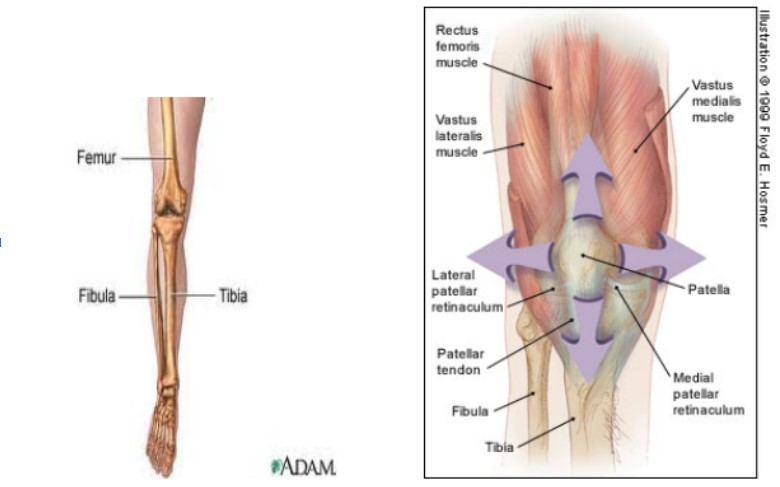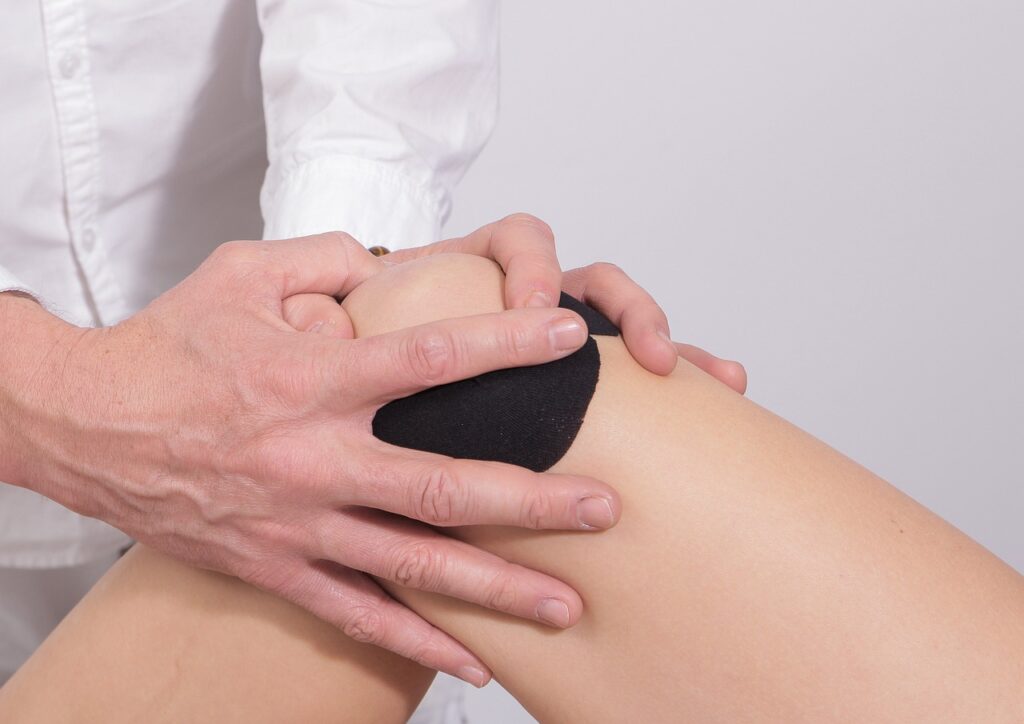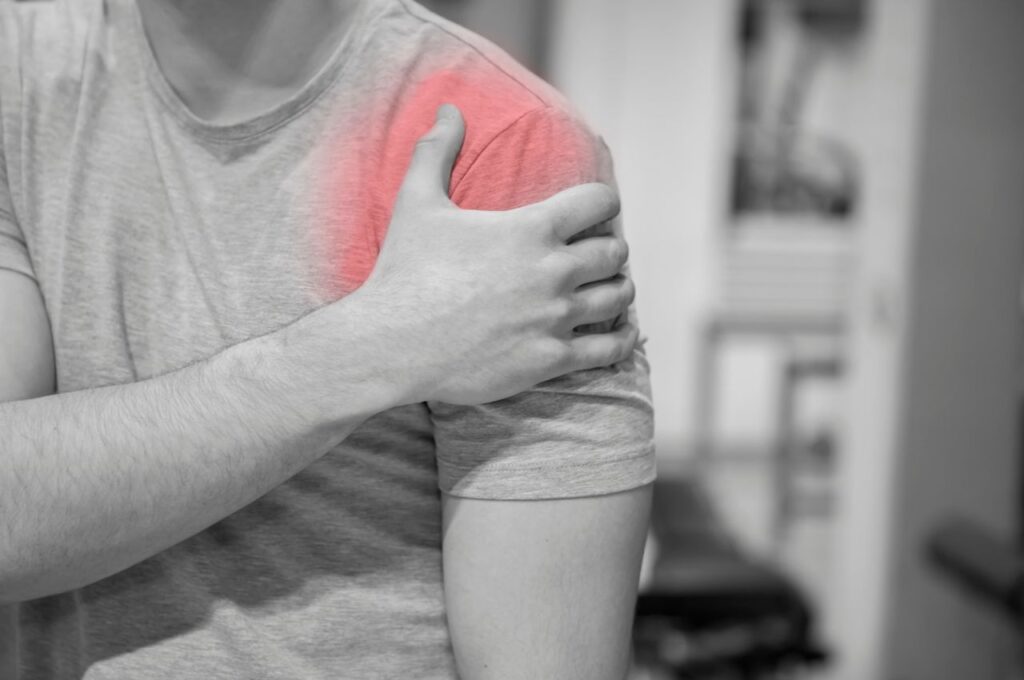Table of Contents
- Understanding Patellofemoral Pain and Treatment Options
- What is Patellofemoral Pain?
- What is the Patellofemoral Joint?
- What can cause Patellofemoral pain?
- Abnormal Patellofemoral Joint Mechanics
- Abnormal Biomechanics of Joint in the Lower Extremity
- Overuse
- How do we Treat Patellofemoral Pain?
- Soft Tissue Mobilization/Stretching
- Strengthening
- Joint Mobilizations
- When should I call my doctor if I think I have patellofemoral pain?
Understanding Patellofemoral Pain and Treatment Options

What is Patellofemoral Pain?
Patellofemoral Pain is anterior knee pain that results from physical and chemical changes in the patellofemoral joint.
This can affect young adults who participate in sports that involve repetitive knee movements such as running or even jumping that end up adding pressure to the knee joint.
If this is the case for you, seeking treatment from an experienced sports physiotherapist is an advisable course of action to take as they provide specialized treatments.
However,
Patellofemoral Pain can also occur in individuals who are not athletes but engage in daily activities such as prolonged sitting or even standing.
in that case,
seeking treatment and advice from a general physiotherapist would be advisable
What is the Patellofemoral Joint?
- The Patellofemoral Joint is the articulation between the patella (knee cap) and the femur (thigh bone)
- The underside of the patella has 2 facets (surfaces) that are covered with cartilage to protect the bone surface and improve gliding between the patella and the femur. These facets receive nutrition to the bone through compression between the patella and the femur
- The patella is held in place by the patellar tendon, the medial patellar retinaculum (fibrous tissue) and the lateral patellar retinaculum
- Muscles that have a direct force on the patella are: rectus femoris, vastus lateralis, vastus medialis and vastus intermedius(not shown)
What can cause Patellofemoral pain?
Abnormal Patellofemoral Joint Mechanics
The Patella tilted towards the outside of the knee (laterally tilted) creates increased pressure between the lateral facet of the patella and the femur which can lead to degeneration at the site while the medial facet of the patella is unloaded from compression and then impairs the nutrition to the patella.
A Laterally Tilted Patella can be due to:
- congenital anomalies at the knee or hip
- tight lateral retinaculum and Iliotibial band (not shown in picture)
- weakness of the vastus medialis muscle
The Vastus medialis can be weakened by disuse of the muscle, impaired control of the muscle, or inhibited due to pain and swelling (from another injury or arthritis)
Abnormal Biomechanics of Joint in the Lower Extremity
Excessive foot pronation (foot flattening) while walking causing the tibia to rotate inwards, creates increased pressure on the lateral facet of the patella
Weakness of muscles that rotate the hip out, cause the femur to rotate inwards while walking and thus creates increased pressure on the lateral facet of the patella
Weakness of muscles that hold the hip level and help to pull the thigh out to the side lead to the hip dropping and creating a greater pull on the lateral side of the patella
Overuse
In repetitive activities such as long distance running and cycling, when the knee is flexing (bending), high force results in increased stress on the patellofemoral joint. The increased stress over time can cause pain and injury.
How do we Treat PatelloFemoral Pain?
Treatment depends on the cause of patellofemoral pain, but may include physical therapy interventions that include some of the following:
Soft Tissue Mobilization/Stretching
- Stretching or massaging the iliotibial band, lateral patellar retinaculum, tensor fascia lata muscle (not shown in picture)
- Mobilization or stretching to the retinaculum
- Patellar taping to decrease it from being pulled and tilted towards the outside of the knee
- Stretches to the calf muscles if foot pronation is the cause
Strengthening
- Exercises to strengthen vastus medialis, may include squats and the use of muscle stimulation to help activate the muscle if inhibited from pain and swelling
- Exercises to strengthen hip muscles to improve the biomechanics of the leg
- Exercises to strengthen certain muscles in the calf and lower leg to support the arch of the foot while walking
Joint Mobilizations
Rhythmic “pushing” movements of bones at the joint if the bones are not gliding properly to allow full movement at the joint and to create normal biomechanics along the leg
When should I call my doctor if I think I have patellofemoral pain?
If you have aching knee pain or other symptoms associated with patellofemoral pain, especially after prolonged exercise or sitting, you should consult a physiotherapist for a physical examination of the knee.
Keep learning: What Can Shockwave Therapy Treat?



